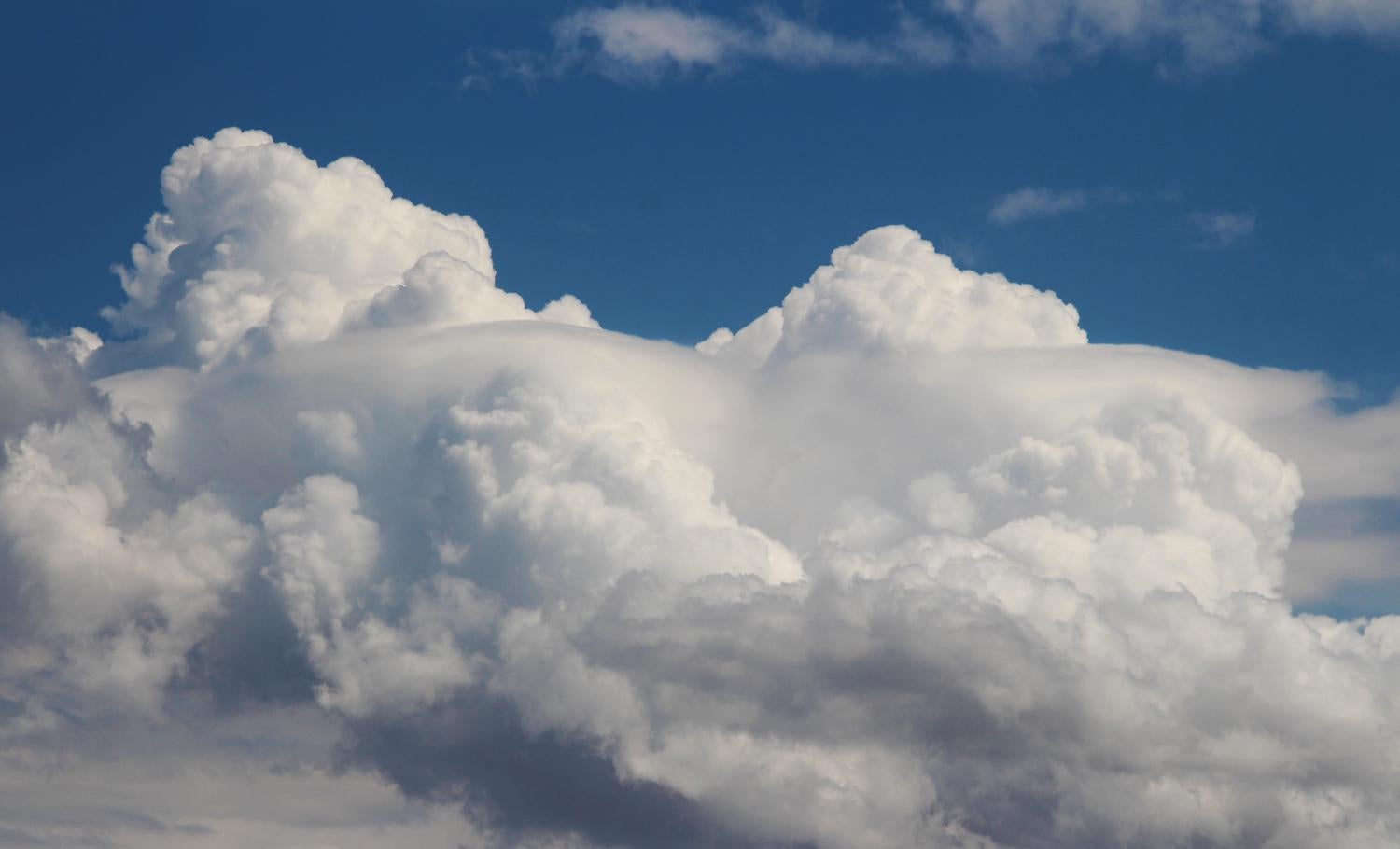Still, as I mused, the naked room,
The alien firelight died away;
And from the midst of cheerless gloom,
I passed to bright, unclouded day.
—Emily Brontë, “A Little While, A Little While”
I’ve written many times about summer clouds in Colorado; moisture-laden air blows over the Rockies to the west, flowing to the east. The Midwestern plains butt up against the hills, and as the afternoon Sun heats them, warm air rises vigorously and meets the eastward-flowing wave. Within a few dozen kilometers, this creates towering pillars of massive, wet air, punching upward into the sky.
A cumulonimbus cloud is born.
The drama and sheer energy of these storm clouds is terrifying and awe-inspiring. But even in their brute force, a delicate veil can be created.
That photo shows a cumulonimbus cloud getting its convection on to the east of where I live in Colorado. You can see several columns of rising air creating the cauliflower puffs in the towers. But two of them, in front of the two in the background, are capped: They have a thin layer of cloud draped over them, looking like a hand pushing upward through a sheet.

Phil Plait
That layer is called pileus, named after a hat worn by ancient Greeks and Romans. As warm air rises rapidly, it pushes the moist air above it which then cools. If it cools past the dew point, the water condenses to form the thin cloud (sometimes the water will form ice crystals, producing a similar effect).
I never saw one until I moved to Colorado, and I remember well sitting outside and seeing it for the first time. I knew right away what must be causing it, and a quick online search confirmed it. Science! I knew enough about how air moves to guess at the solution, and was pretty pleased with myself for getting it right.
Pileus clouds tend to be ephemeral, dissipating quickly as the convecting air blows upward. I had just enough time to see this pair, run outside, and snap a few shots. Within minutes they were gone.
A good chunk of science is being at the right place at the right time to see something briefly. I suppose the same is true for art, and when it comes to clouds—as well as so many other things—they are both at the same time.
As for the quote at the top of this article, normally I wouldn’t be so cheeky as to disagree with Ms. Brontë, but in this case I must. Clouds are a glimpse into the mighty power of fluid dynamics, complicated equations made real and actual and gorgeous, painted across the sky. And given how dry it’s been here lately, a good rain cloud would be cheerful news indeed.
Other articles I’ve written talking about pileus clouds:
- A Gorgeous Video of a Devastating Fire
- Storm Chasing Time-Lapse
- Great Photo of a Twisty Rainbow Cloud—Iridescent Pileus (must-see)
- Dancing Lights Against the Sky (trust me, you’ll love this bizarre phenomenon)